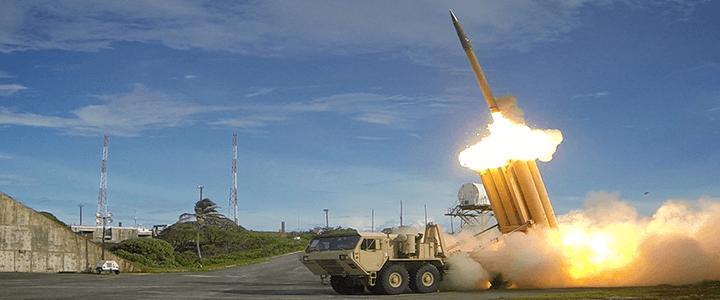The Democratic People’s Republic of Korea tested another intercontinental ballistic missile on Friday, two days after Iran tested its own ICBM, and one day after the Senate passed a sweeping bill that imposes stiff sanctions on both countries, plus Russia.
The Pentagon quickly confirmed the intercontinental nature of the launch, which sent the missile on a 45-minute flight that traveled 2,300 miles high and 1,000 miles in distance. Depending on the weight of the payload, that could put American cities of Los Angeles, Denver, and even Boston in range of the Korean regime.
This was North Korea’s second ICBM test this month, and according to data compiled by the Center for Strategic and International Studies, its 18th missile test of 2017 overall. The country is on a pace to set its record for tests in a year, a clear indication it has no intention of slowing down its nuclear program.
As I said to a friend who contacted me in an anxious moment on Friday, this is cause for concern, but not yet a cause for losing sleep. But at the same time, the Trump Administration needs to respond to the mounting crisis.
WHAT EXACTLY ARE THE KOREAN CAPABILITIES?
We’ve discussed it before, but each time Korea shocks us with a new missile capability, it’s worth revisiting what it takes to launch a nuclear strike. So far, the North Koreans have demonstrated only that they can detonate a nuclear bomb, and launch a missile that has the range to hit the U.S. Those are two basic components, but that does not mean they have the ability to strike the U.S., or will any time soon.
A missile with the range to reach the continental United States is only one component. That missile must also have the capability to fly on a consistent course towards a specific target. Anyone who has launched an Estes hobby rocket can tell you it’s one thing to get off the ground, and quite another to make a rocket go where you want it to go.
It must be able to carry a nuclear warhead, and there is no indication that North Korea has the ability to build a nuclear bomb small enough to fit on the tip of a missile. The U.S. nuclear warheads currently in service weigh between 290 pounds for the W-80-1 warhead for the air-launched cruise missile, and something less than 800 pounds for the Trident submarine-launched missile’s W-88 warhead.
And that warhead must be able to survive re-entry into the earth’s atmosphere. Even the Space Shuttle, the most advanced human spacecraft ever built, was vulnerable to the heat generated by re-entry, as demonstrated by the Columbia’s tragic fatal accident in February 2003.
NORTH KOREA’S ACTIONS GIVE THAAD A BOOST
In a stunning reversal of policy clearly linked to the increased threat from the north, on Saturday, South Korea’s new president, Moon Jae-in, approved the deployment of the four additional Terminal High-Altitude Area Defense system launch batteries. Two THAAD batteries have been on duty in Korea since March of this year, but Moon, keen to undo much of his disgraced predecessor’s policies, ordered an environmental study before he would allow any new deployments.
He now realizes that he does not have the luxury of pursuing that policy.
Also lost in the noise of palace intrigue in the White House and the ongoing obsession with all things Russia, is the news that on Sunday, the Missile Defense Agency conducted another successful THAAD test. The intercept of an intermediate range missile launched from a cargo aircraft over the Pacific Ocean is THAAD’s 15th consecutive intercept. It remains perfect in testing.
The U.S. policy may be a little disjointed, with the government sending mixed signals over how many more violations of U.N. resolutions it will tolerate before responding militarily. But as Air Force Gen. Terrence J. O’Shaughnessy, commander of Pacific Air Forces said following a B-1B bomber flyover of the Korean peninsula Saturday, “If called upon, we are ready to respond with rapid, lethal, and overwhelming force at a time and place of our choosing.”




